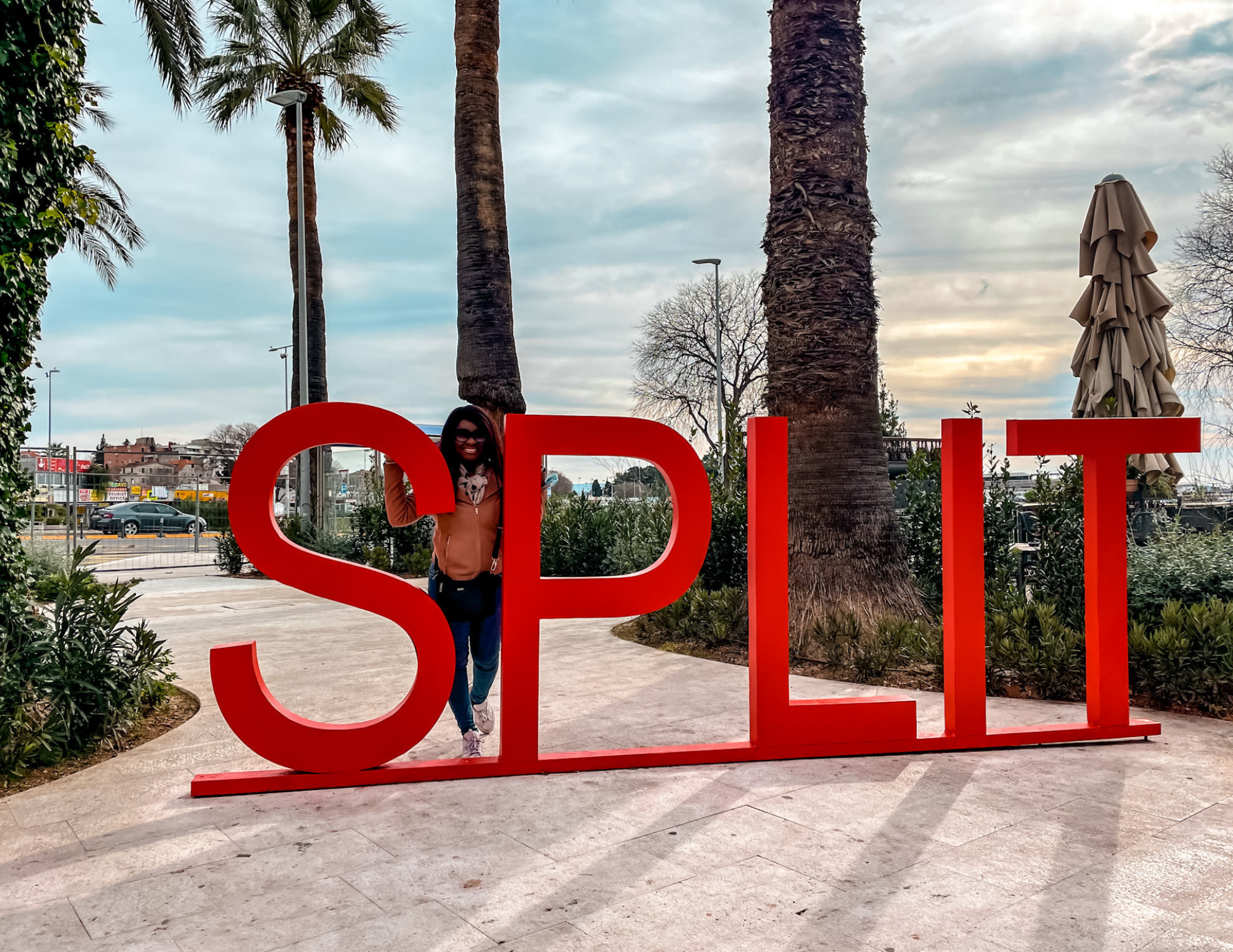Updated November 2025
Split, Croatia Travel Guide: What to Know Before You Go
Split, Croata, the second largest city of Croatia and the largest city in the region of Dalmatia. Lying on the eastern shore of the Adriatic Sea and spreads over a central peninsula and its surroundings.
Split is built around the incredible Diocletian’s Palace, a 1,700-year-old Roman palace that later became the core of the city. Today, that whole historical complex and Old Town are a UNESCO World Heritage Site, packed with Roman, medieval, Gothic, Renaissance and Baroque architecture layered on top of each other.

It was an interesting trip getting here from Dubrovnik. We crossed the border from Croatia (Dubrovnik) to Bosnia and Herzegovina to get back to Croatia (Split) by bus. Once again we had our new friends, the American couple on the same bus, same time, same destination, totally by chance.
Update for today’s traveler: When we did this, most buses had to dip through the tiny Bosnian coastal strip at Neum. Now, thanks to the Pelješac Bridge, many routes drive entirely within Croatia between Dubrovnik and Split, skipping the Bosnia & Herzegovina border crossing. Some coastal routes still use the old Neum corridor, though, so always check your exact route and make sure your documents/visas cover any border crossings.
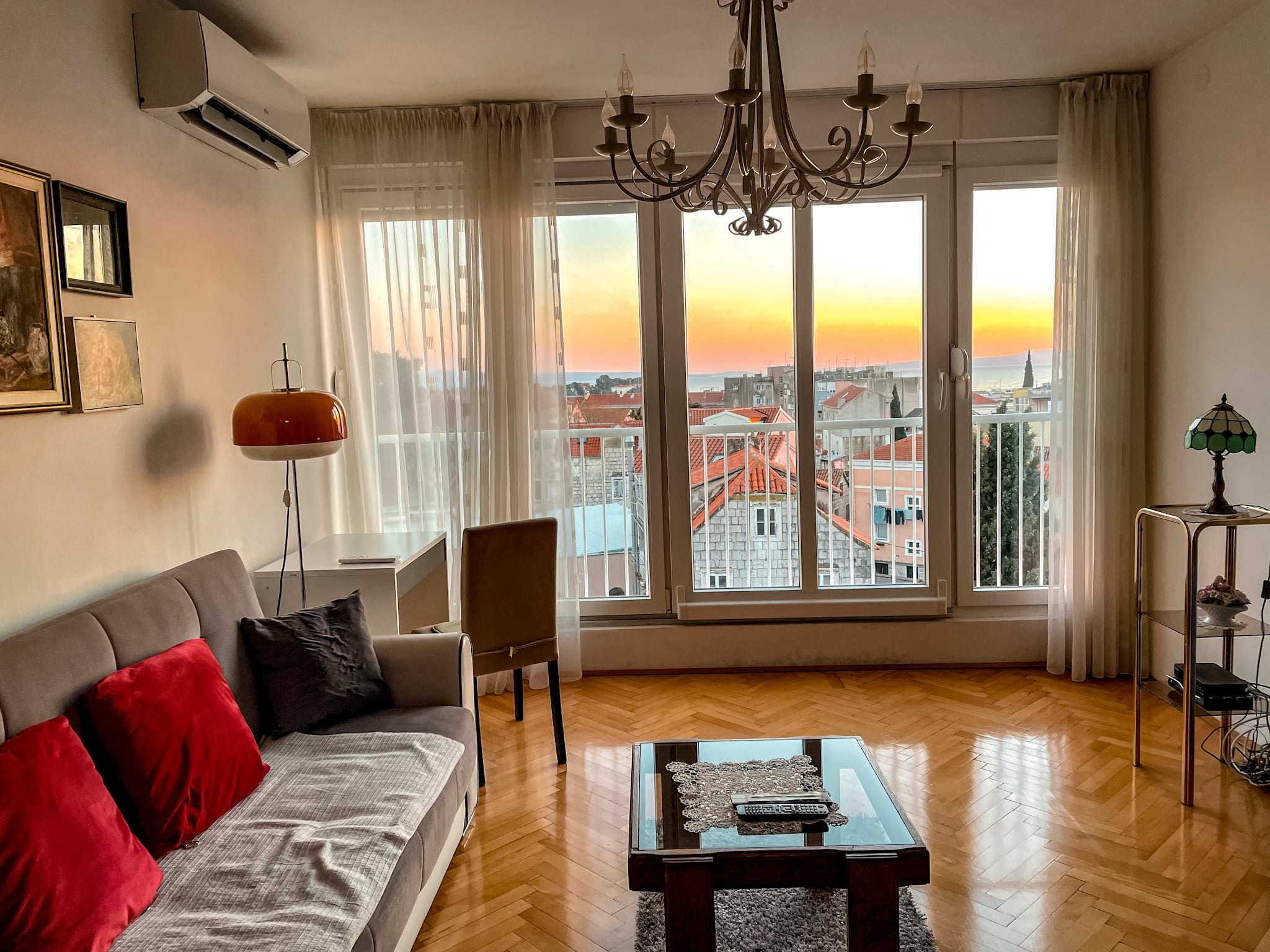
Where We Stayed in Split (and Best Areas)
Our Airbnb was spacious, clean and in the perfect location. Close to everything we needed to do with an amazing view of the city, Old Town and the sea.
If you’re deciding where to base yourself in Split:
- Inside or right by Diocletian’s Palace / Old Town:
- Great for: first-time visitors, short stays, no car.
- You’re steps from the Palace, Riva waterfront, ferries and most tours.
- Near the Riva and ferry port:
- Perfect if you’re catching early ferries to islands like Hvar, Brač or Vis and still want to walk into Old Town.
- Near the beaches (Bačvice, Žnjan, Trstenik):
- Ideal for a more “beach holiday” feel, while still being a short walk or quick bus ride from the Palace.
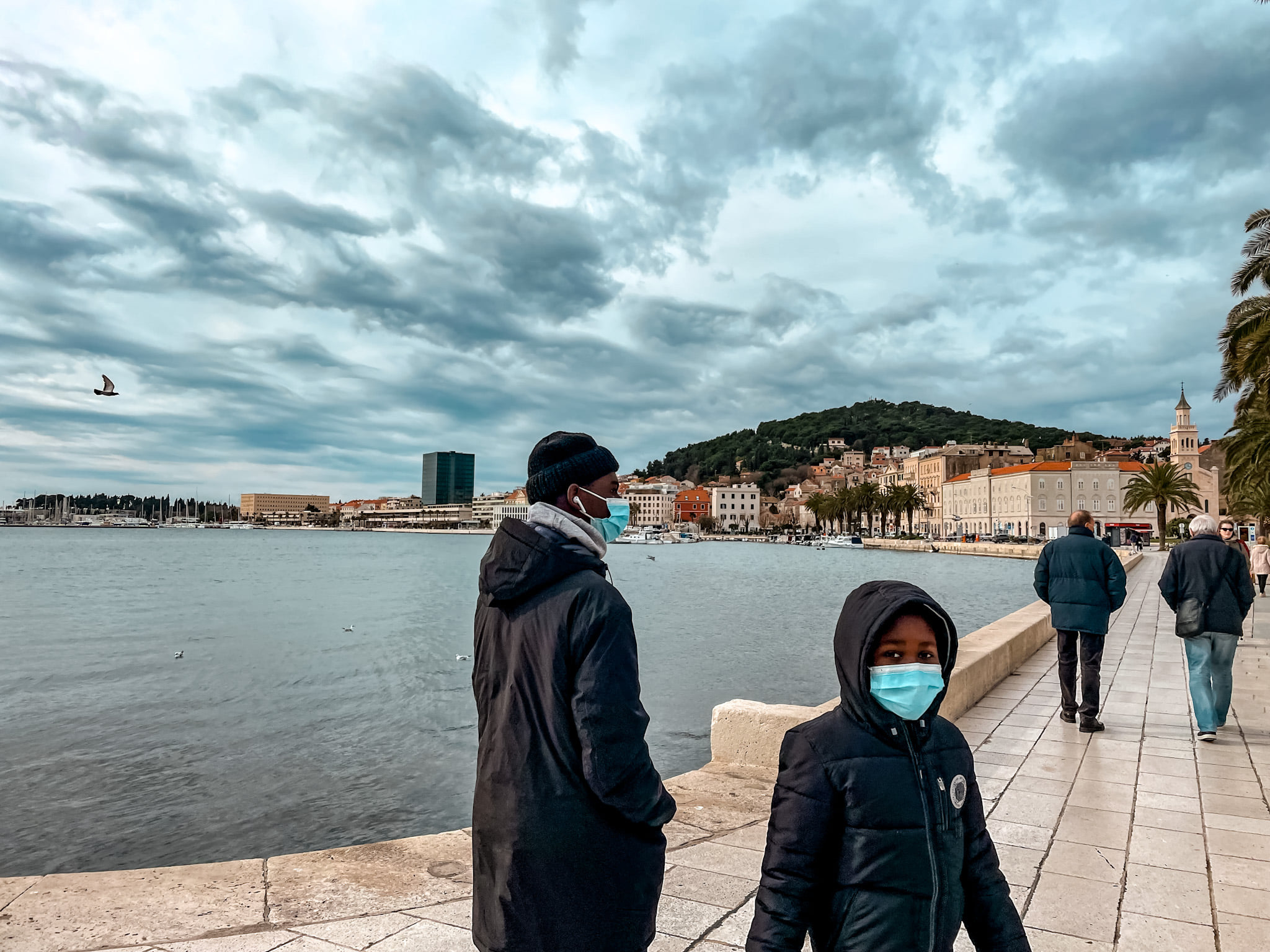
First Impressions: Split’s Waterfront Vibes
Walking the docks, where the cruise ship passengers disembark and set out to explore, I got parties all day and night during the summer, drinks flowing, music blaring like it was tonight, people hyped and having the time of their lives kind of vibe. The strip was lively, full of restaurants, bars and shops.
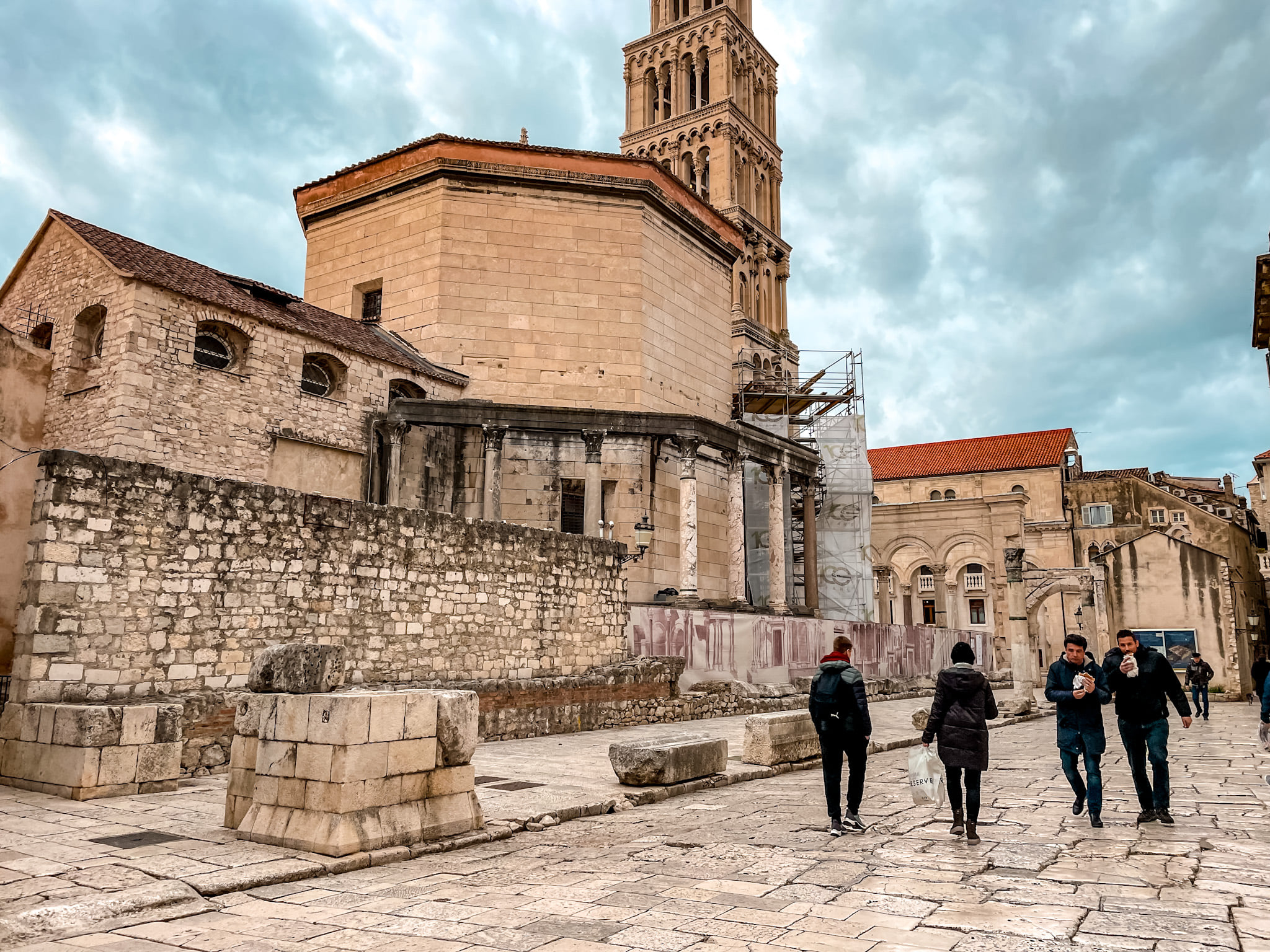
That “strip” you’re walking is Split’s Riva – the waterfront promenade in front of Diocletian’s Palace. It’s lined with palm trees, cafes and bars, and is basically the living room of the city, where locals and visitors stroll, sip coffee, meet friends and watch ferries come and go.
Whether you’re a morning coffee person or a sunset-cocktail person, plan to spend a lot of time on the Riva just soaking it all in.
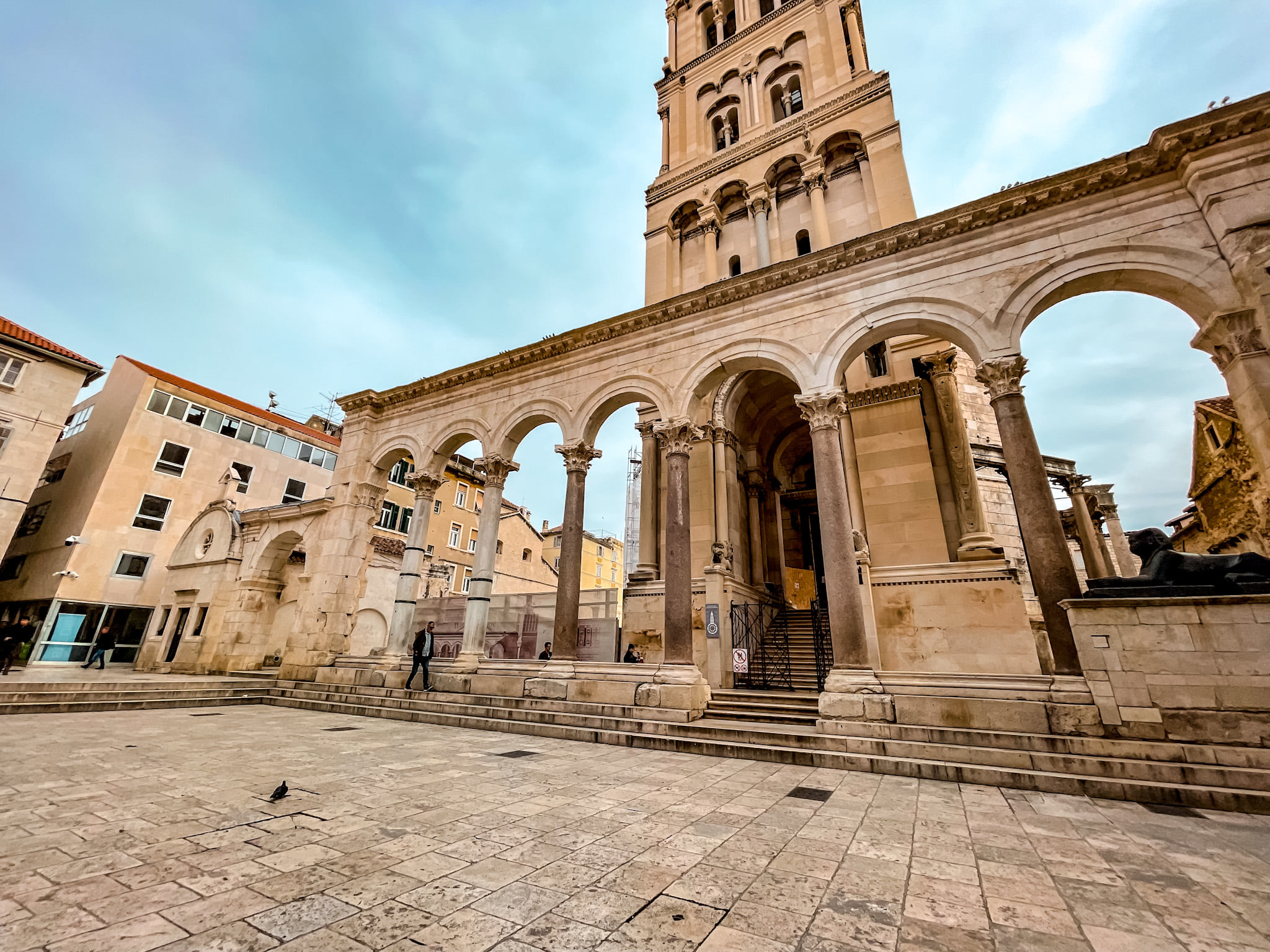
Split Old Town & Diocletian’s Palace (UNESCO Site)
The Old Town is beautifully preserved. It’s interesting seeing dozens of bars and restaurants thriving right alongside some of the world’s most impressive Roman ruins. The Old Town received its UNESCO World Heritage classification in 1979. Diocletian’s Palace is the most prominent landmark within Old Town and dominates the entire area.
Diocletian’s Palace was built in the late 3rd and early 4th century AD as a retirement palace for the Roman emperor Diocletian. Over time, as the Roman Empire faded and nearby Salona declined, people moved into the palace walls and built homes, churches and squares right into the original Roman structure. That’s why today Old Town Split literally is the Palace, an active city living inside a 1,700-year-old monument.
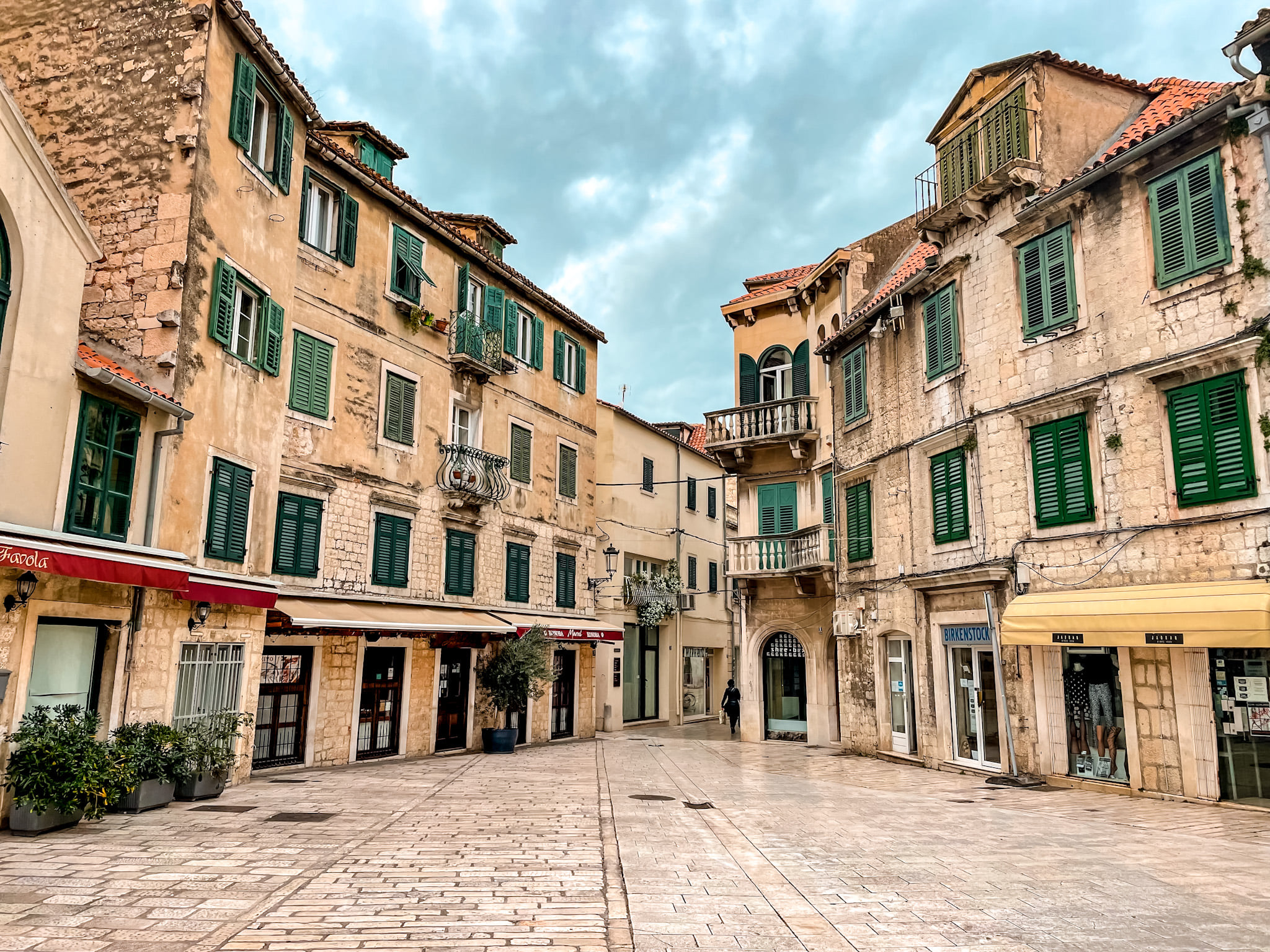
While checking out the palace, a posh little lady came over and asked if we knew the history. I replied no, we didn’t and she spent over 15 mins telling us all about the palace and the emperor, what he did, pointed to each section, and explained what happened. Honestly, we were a little lost standing there looking around before she came up and she just happened to see us looking lost and gave us more than we could have asked for. Beautiful city, amazing people.
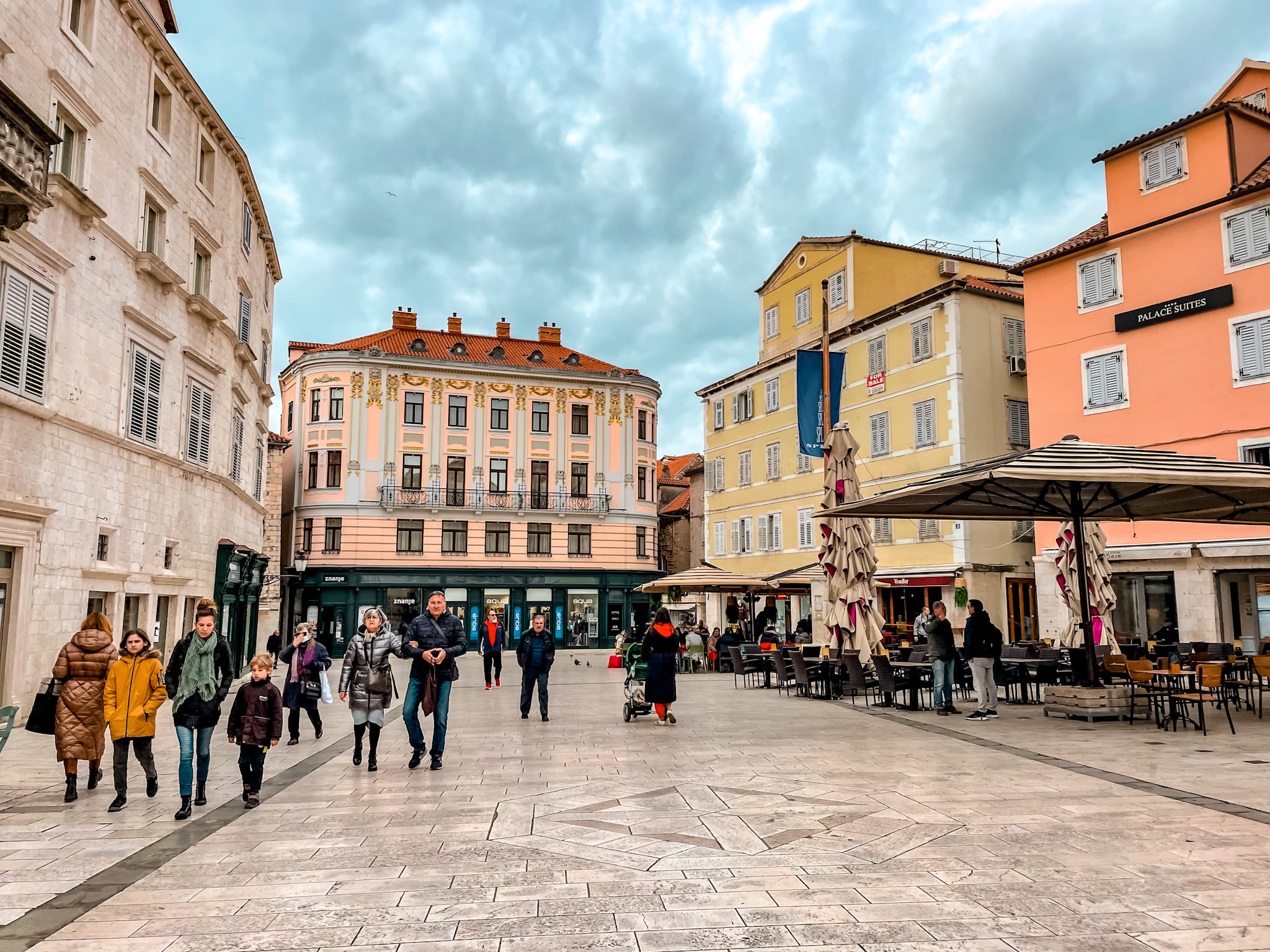
If you don’t have a random history angel show up like we did, you can:
- Join a Diocletian’s Palace walking tour with a licensed guide (lots of 1.5–2 hour options).
- Or download a self-guided map and audio and wander at your own pace.
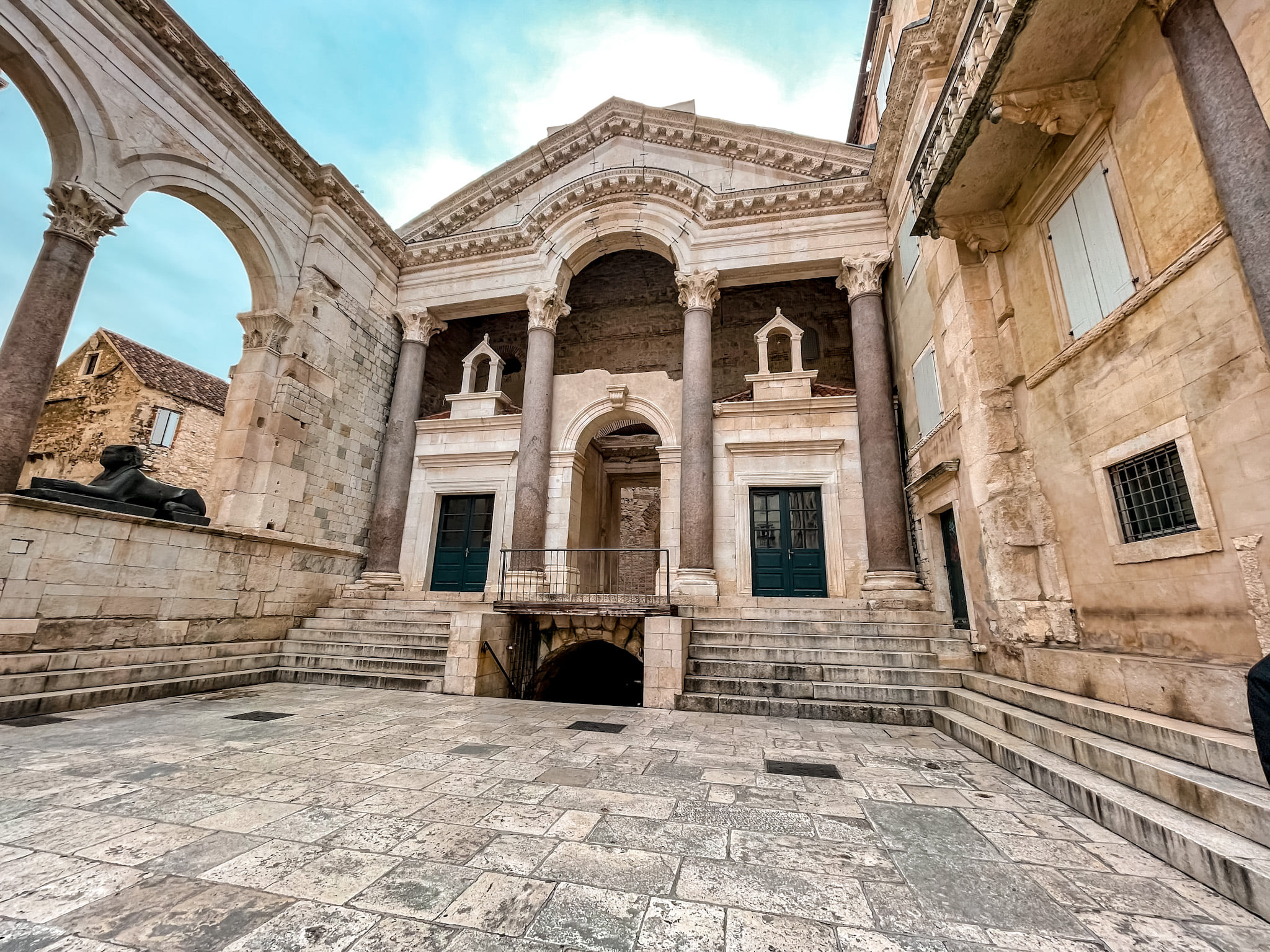
Cathedral of St. Domnius
Head into the The Cathedral of St. Domnius (Katedrala Sv. Duje) which can also be found within the ancient area of Diocletian’s Palace. This was closed when we visited so we did not get the chance to experience inside.
The cathedral is extra special because it’s basically Diocletian’s old mausoleum turned into a Christian church, one of the oldest Catholic cathedrals in the world still in use in its original structure. You can usually:
- Visit the interior and treasury
- Climb the bell tower for incredible views over Split, the Riva and the Adriatic
If it’s open when you visit, it’s absolutely worth the ticket.
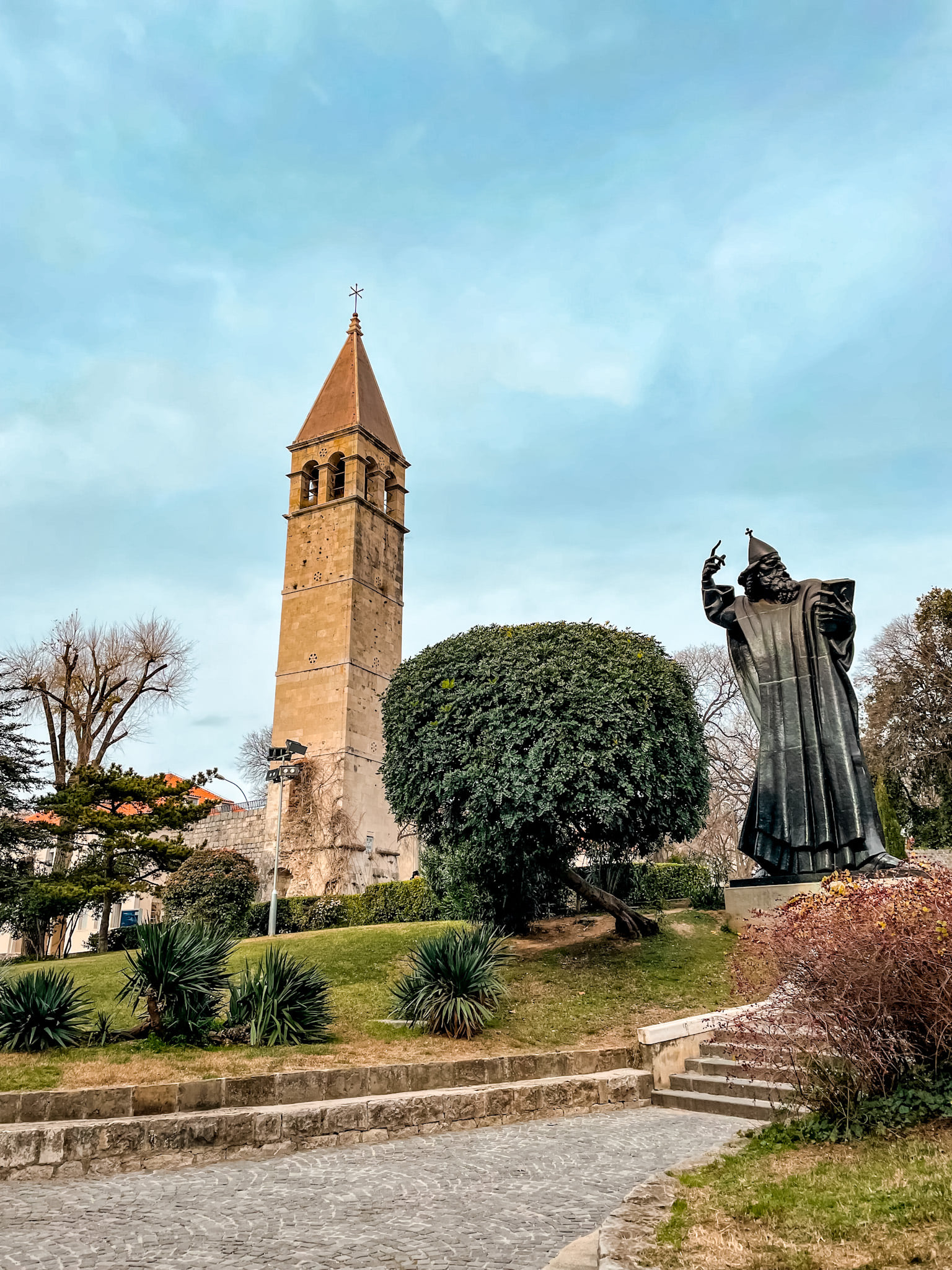
Free Walking Tours in Split
Depending on how or who you are traveling with, a free walking tour is a great idea. We have not taken these up but have friends and others who swear by them. You get to see the city, learn the history and more. All yo do it tips. be sure to find one as they are in basically every city out there and a quick google search will bring you to one.
In Split, free walking tours typically:
- Last 1.5–2 hours
- Cover Diocletian’s Palace, Peristil, Golden Gate, Riva and main squares
- Operate on a “pay-what-you-want” tip basis, so you can choose your budget
You’ll find multiple companies offering them in English and other languages, booking online beforehand is usually easy.
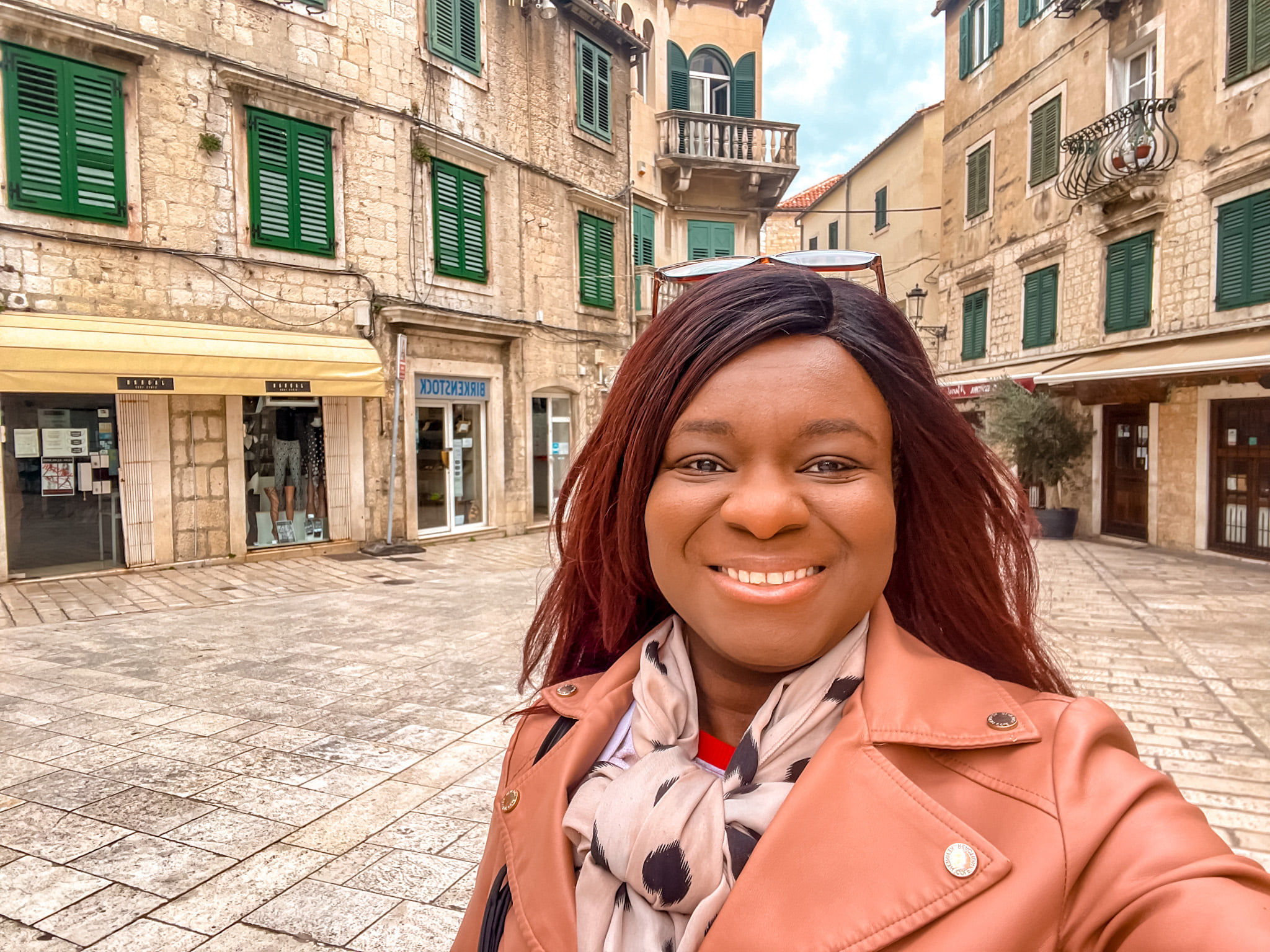
Peristil Square & People-Watching
Hang out in Peristil Square, the original Roman court, where you can soak up the architectural majesty of old Split. Sip on coffee or wine and people watch, take in the sights and relax.
Peristil (Peristyle) Square is the central courtyard of Diocletian’s Palace, framed by colonnades and overlooked by the Cathedral of St. Domnius. Today it’s still a gathering place where locals and visitors sit on the steps, listen to street musicians, and watch the light change on the stone.
Come here early in the morning for photos with fewer people, or in the evening when it feels almost theatrical.
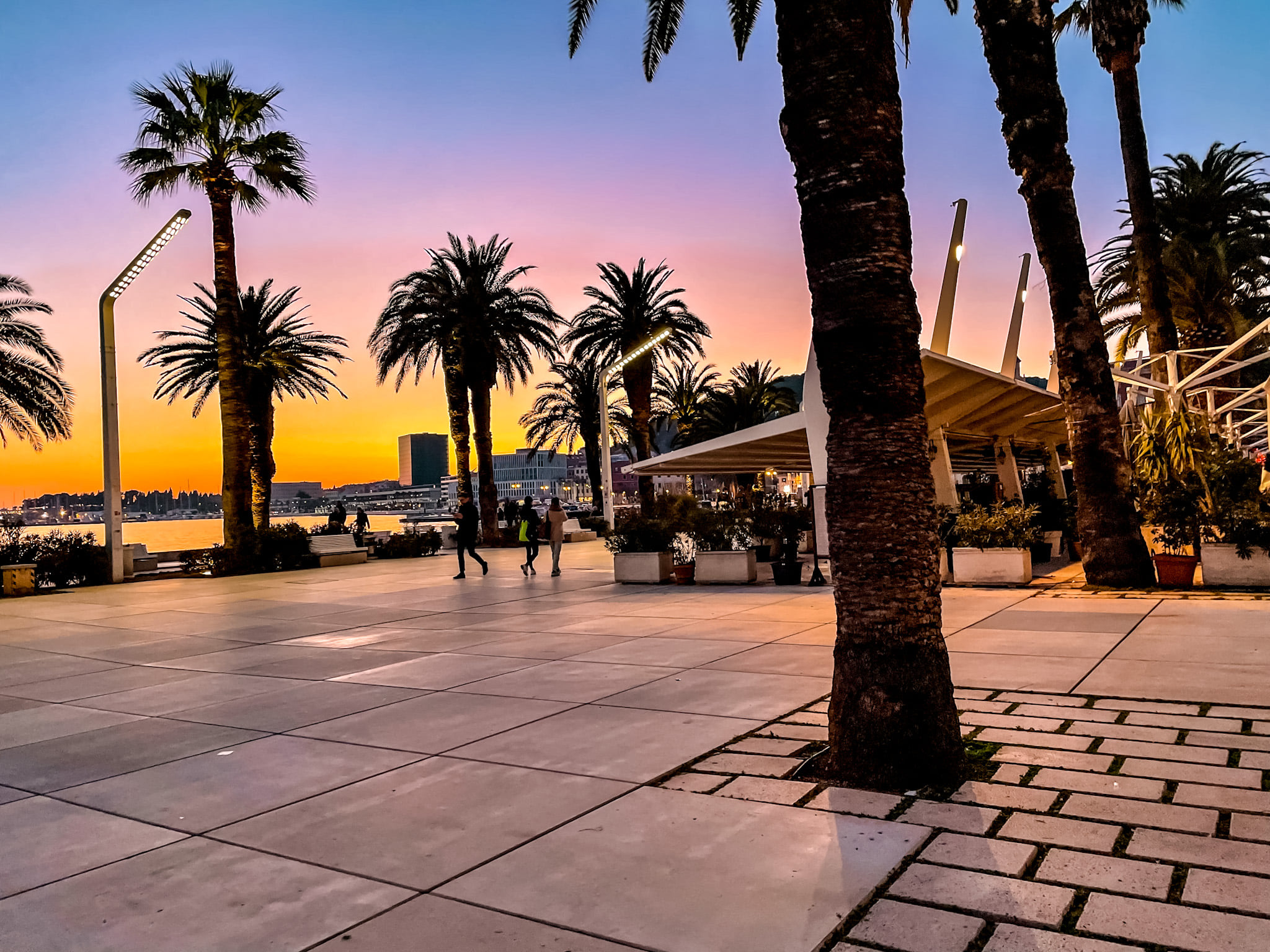
Split in the Off-Season vs. Summer
Because we went in the off season, and because of the rona some things were closed. But the city was still alive with lots to see and do. If you are there during the summer, the beach is a no brainer. Bask in the beauty of the Adriatic Sea.
Split has a classic Mediterranean climate:
- Summer (June–September): hot, sunny, beach weather; peak crowds and higher prices.
- Shoulder seasons (May, early June, late September, October): warm enough for sightseeing and some swimming, fewer crowds, great balance.
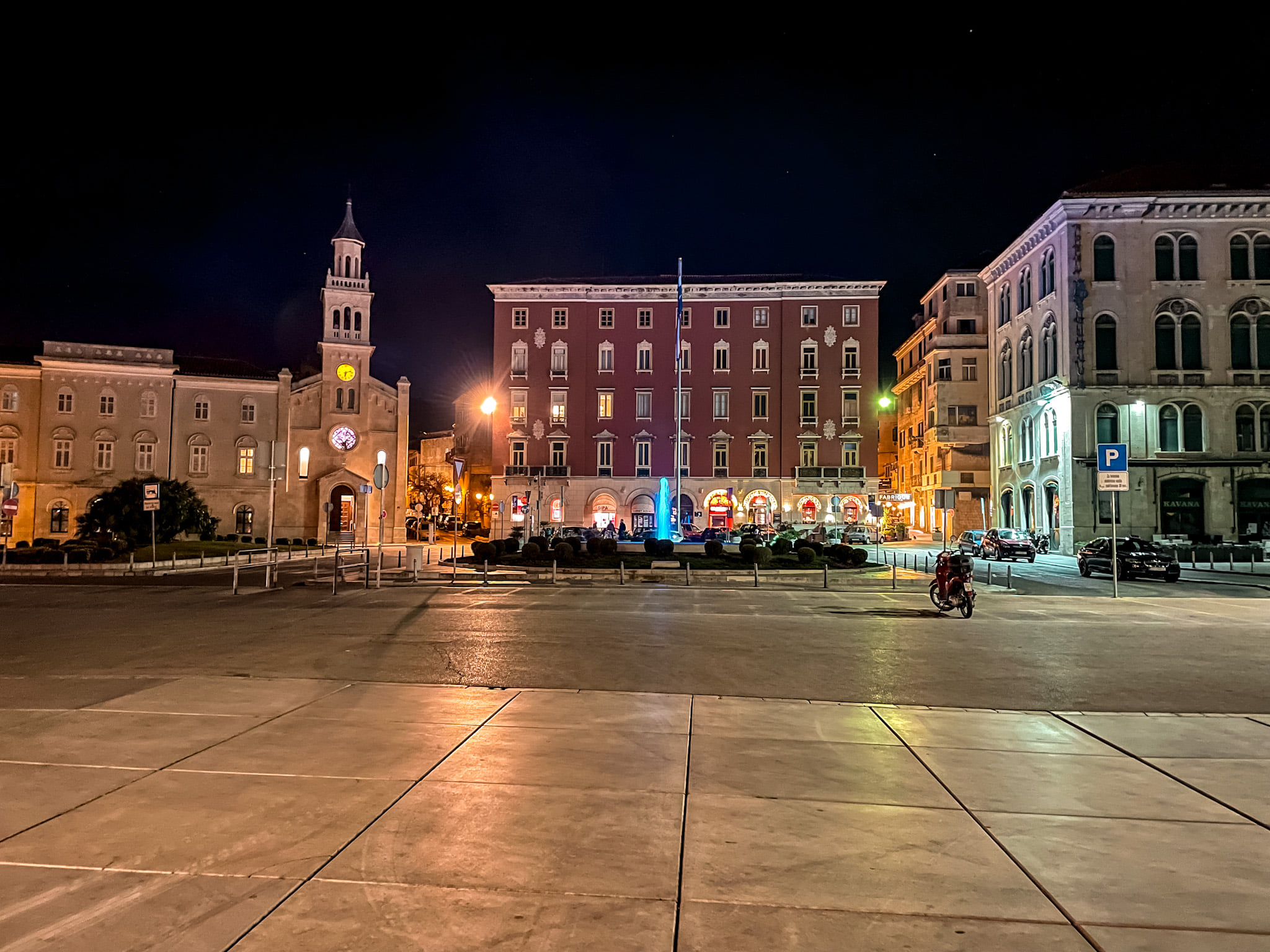
- Winter: cooler, sometimes windy and rainy, but the Old Town feels peaceful. Some tours and restaurants close or reduce hours, but you get a more local pace.
Our winter experience meant quiet streets, open views, and easier photos, but if you want that classic Croatian summer, plan for June–September and build in time for the beaches and islands.
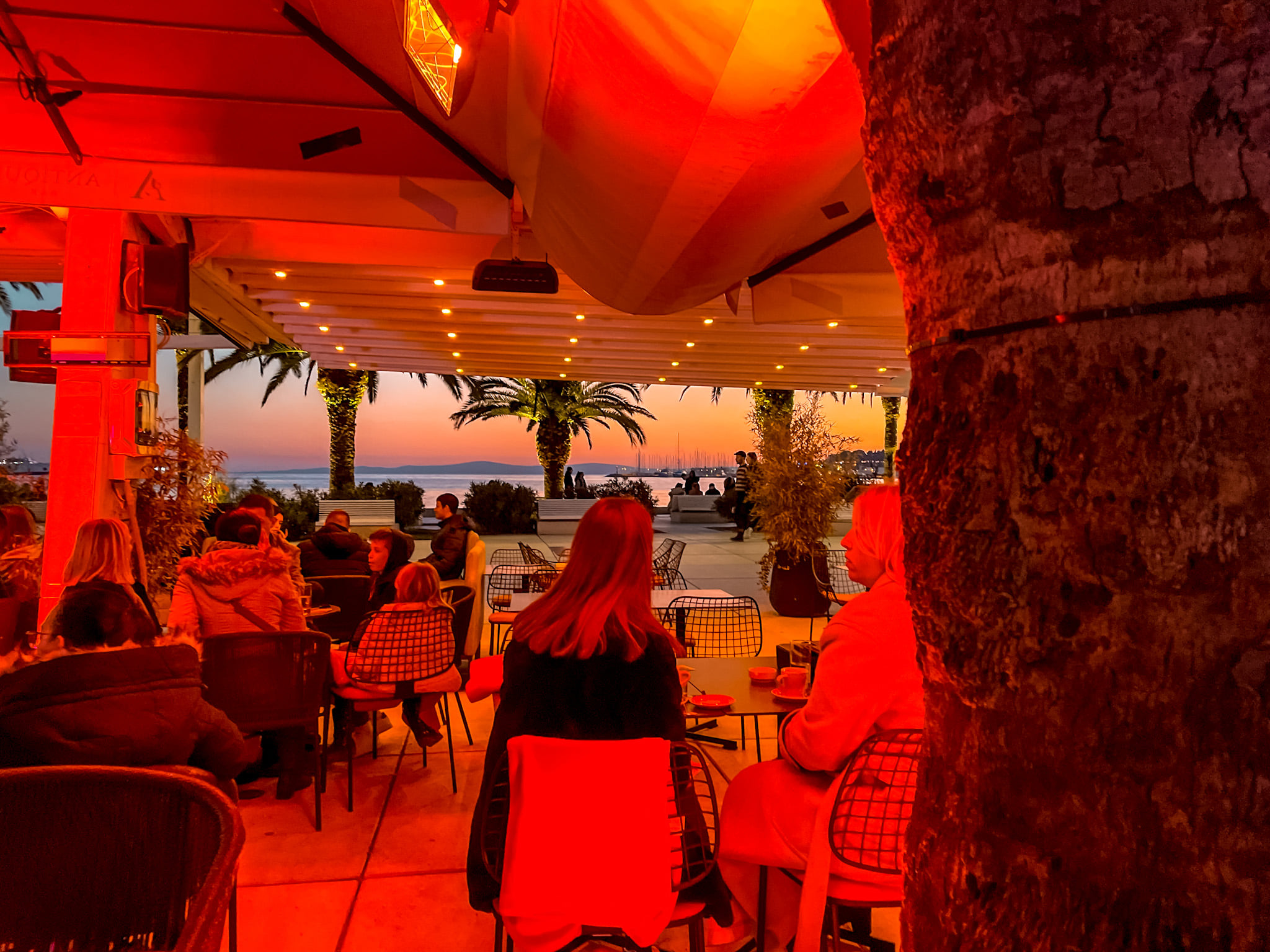
Beaches in Split
If you are there during the summer, the beach is a no brainer. Bask in the beauty of the Adriatic Sea.
Some key beaches to know:
- Bačvice Beach: Split’s most famous city beach, sandy and shallow—great for kids and for watching locals play picigin, a traditional ball game in the water.
- Žnjan Beach: The largest beach area in Split, a long pebble stretch with a promenade, cafes and family-friendly facilities. It’s currently being heavily upgraded with new landscaping, playgrounds and amenities, making it an even bigger summer hub.
- Kašjuni & other west-side beaches: More scenic, backed by cliffs and greenery, with clear water and views of Marjan Hill.
Even if you’re not a big swimmer, walking the coast and grabbing a drink at one of the beach bars is a must.

Island Day Trips from Split
Split is also a major ferry hub, it’s super easy to hop to nearby islands for a day or longer:
- Hvar: Chic island known for pretty harbors, nightlife and lavender fields. Multiple daily ferries and catamarans run from Split; journeys can be under an hour on fast boats.
- Brač (Bol): Famous for Zlatni Rat beach, reachable via ferries from Split to Supetar or from nearby ports to Bol.
- Vis: A bit further, quieter, with beautiful coves and the Blue Cave excursion from nearby Biševo.
If you have more than a couple of days in Split, I’d absolutely recommend at least one island day trip.
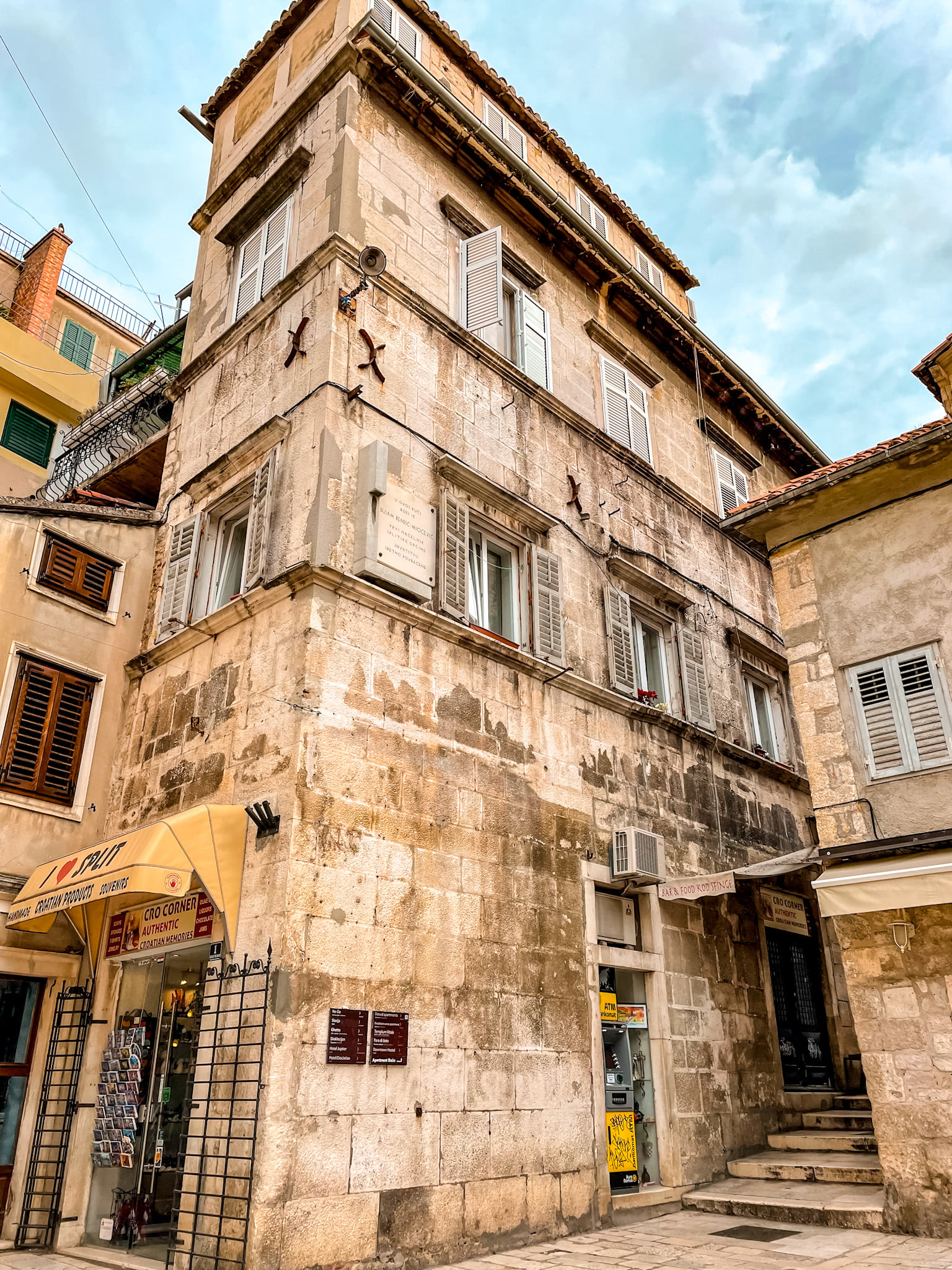
Practical Tips for Split
Currency:
When we traveled, Croatia still used the kuna. Today, Croatia uses the euro (€) as its official currency (since 1 January 2023), and kuna has been phased out.
- ATMs and cards are widely available in Split, especially around Old Town.
- Smaller cafés and stands may still prefer cash, so keep some euros on hand.

Getting Around:
- You don’t need a car if you stay near Old Town or the Riva, Split is very walkable.
- Local buses connect the city center with neighborhoods and beaches like Bačvice and Žnjan.
- The ferry port is right next to Old Town, so island day trips are easy on foot.
Safety & vibe:
Split feels lively but relaxed, busy in summer, calmer in winter. As always, watch for standard travel things (pickpockets in crowds, late-night drinking spots), but overall it’s a very popular and well-trodden destination.

Final Thoughts
We enjoyed our stay in Split. Whether you are looking for a relaxing beach vacation or to load up on history, Split will deliver on both.
Between the Riva’s energy, Diocletian’s Palace and those island ferries waiting at the dock, Split is one of those places that can be your city break, your beach trip, or your island-hopping base all in one.
If you’re heading there after Dubrovnik like we did, or flying in fresh, you’ll land in a city that feels ancient and modern at the same time, and now you’ve got everything you need to hit the ground running.
